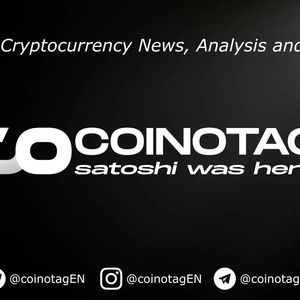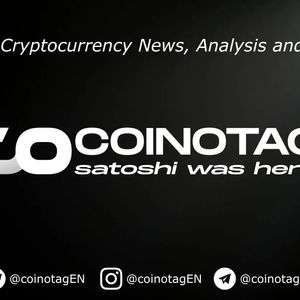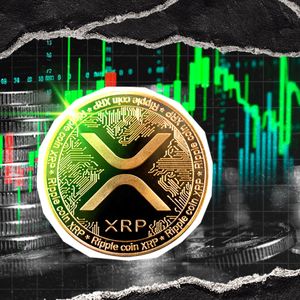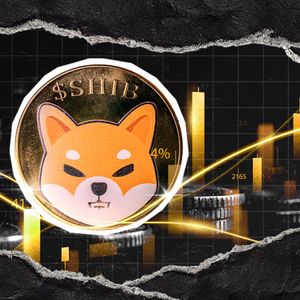Summary SOLT (Volatility Shares 2x Solana ETF) offers leveraged exposure to Solana's daily price, targeting tactical traders comfortable with amplified volatility and daily monitoring. SOLT achieves 2x Solana exposure via regulated futures, not direct SOL purchases, with $781M AUM, 1.85% expense ratio, and robust liquidity. On-chain analysis highlights strong Solana fundamentals: rising TVL, user growth, and liquidity inflows, supporting positive momentum and long-term value. Recommend tactical buying of SOLT to amplify Solana beta, driven by strong fundamentals and ETF approval speculation, with active risk management essential. Introduction 2x Solana ETF (SOLT) is a Volatility Shares Trust ETF that seeks to double (+200%) the daily Solana price movement (daily target 2x), using derivatives instead of buying the asset directly. It is listed on the NASDAQ, with a start date of 20/03/2025, and is intended for traders who understand the effect of daily capitalization (compounding) and the risks of 2x leverage. The fund manager warns about this: this vehicle is a product for investors who can monitor the position on a daily basis and tolerate amplified volatility; the value of the stake can vary sharply even in a single session. Volatility Shares As of 9/10/2025, the fund's website shows: net assets $672 million NAV $24.38 27.56 million shares median spread: 0.12% (30d) expense ratio: 1.85% Ticker: SOLT CUSIP: 92864M830 Volatility Shares Operationally, SOLT obtains its exposure primarily through Solana futures listed on regulated markets (CME Group's Solana future), further relying on high-quality cash and collateral (T-bills or government monetary funds) to cover margins and liquidity. Volatility Shares In its holdings, we found that it holds a 200% exposure in Solana futures and a 100% “Cash & Other” item (cash, accrued assets/liabilities and government money fund shares). This combination makes it possible to meet the 2x target without recourse to capital lending: the leverage is derived from derivatives, not traditional financial leverage. The trade-off is the costs/benefits of roll (as contango/backwardation) and potentially imperfect spot tracking when the futures curve moves. Risks: Daily Compounding and Beta Slippage In the first graph, taking as a time horizon the start of the ETF, we have built a comparison of how the Solana cryptocurrency has evolved in its spot price and the real SOLT ETF. To these two series we have added the theoretical SOLT (SOLx2) that takes the spot performance of Solana and multiplies it by two, without added frictions. This graph, we will use it as a visual support to compare the trajectories of the underlying, the actual product and the x2 “ideal”. In this way, we obtain a first insight into the effect of volatility and daily reset. Node Analytica SOLT, SOLX2, SOL-Spot base 100 Looking at the series in the graph, while there is a clear trend the SOLT ETF accompanies the theoretical one (SOLx2) and loses in lateral movements with volatility increasing the widening between the series. Node Analytica Daily Tracking Difference & Cumulative Divergence We visualize better the gap between the real and the theoretical with the following graph that combines the blue line of cumulative divergence with the area of the Daily Tracking Difference (green if SOLT yields above 2× daily and red if it yields below). The cumulative divergence measures how far the accumulated “path” of the ((REAL)) SOLT ETF has deviated from the theoretical when both start on the same day. If positive, the actual ETF is ahead of the theoretical ETF and vice versa. In this way we can quantify the erosion (daily reset, roll, commissions, spreads, etc.) of the leveraged ETF. After a convulsive start that we will treat as an operational outlier (by possible time misalignment and/or premium/discount at closure), over time the divergence deepens, to a current -20%. The gaps between both values are accentuated when volatility increases, while more stable trends bring the real performance closer to the theoretical. In the same way, it can be seen that the Tracking Difference tends to oscillate around 0 with a typical amplitude of +/- 10%. When the underlying asset ((SOL)) enters into cleaner trend tranches, the area softens and the divergence reconverges. On the other hand, in lateral and volatile phases, tracking alternates with greater intensity, and divergence deepens. So far, this indicates that SOLT is a good option to maintain in the short term and capture directional impulses with positive momentum. In this scenario, the position offers its best version, while on the volatile side, it erodes the result versus the theoretical one, and therefore maintaining it in the long term makes no sense from the point of view of profitability/risk. Node Analytica Rolling effective beta In the following graph, with the effective beta, we observe how many points real SOLT moves for each point that SOL spot moves. As the ideal theoretical beta should stay around 2, if you frequently move away, it means that something is happening with tracking, microstructure, or market regime. Since the start of the ETF, except on two occasions, the beta has remained constantly below 2, reaching extreme levels of 1.5-1.6 in volatile laterality regimes and only reaching levels 2 of beta, when the trend was constant and directional volatility during the month of July. We also observed a convergence last September when the price maintained momentum without strong oscillations in the microstructure. This analysis reinforces the theory that this instrument should be used tacitly for short-term operations, a tight size, and measuring accurately the inflows by monitoring beta, tracking volatility, and volatility: final phases of price consolidation and/or beginnings of confirmed upward micro-trends that break with sideways ranges. Also, reduce/close exposure when side volatility increases along with downward reversals of the beta. Regulatory Warning Regulatory warning. SOLT is a 2× daily reset leveraged ETF that gets its exposure mainly through futures and is geared towards tactical operation by experienced investors. The SEC and FINRA caution that leveraged/reverse ETFs are designed to meet their objective in daily periods and that over longer horizons their performance may differ significantly from the expected multiple of the underlying, especially in volatile or sideways environments; therefore, they require active monitoring and a short-term horizon. In addition, FINRA reminds institutions (and by extension the investing public) of their suitability and supervision obligations with these products, given their complexity and specific risks. Analysis - On-Chain Fundamental In this section we will analyze the investment vehicle proposed from the perspective of on chain analysis. The purpose of this block is to obtain insights from the blockchain to provide information to the reader about its fundamental value and argue the momentum of it and how it translates into the price of the asset. Node Analytica TVL & Stables The first chart shows two metrics: Total Value Locked (TVL) (Blue) and Total Stable Coins (Yellow), both measured in USD. The TVL is the number of Solanas that are “blocked” and cannot “move”—that is, it represents how much of the total circulating supply is not actually available. On the other hand, the line of SOL_STABLE, represents the amount of stable coins expressed in USD that are found in the Solana blockchain. That said, let’s look at each: A positive trend of the TVL, like the one we have in the graph, is usually linked to two main factors: an increase in the number of projects and greater DeFi activity. This in turn positively influences the number of validators/operators committed to the ecosystem. The translation is simple: capital inflow and increased interest: interest on the part of application developers, new validator/operator nodes, and infrastructure creators for DeFi markets → improves the supply and availability of services on the network → attracts users → increased capital inflow into the Solana ecosystem → increased demand = medium/long-term value. Another important aspect of the TVL is that the higher it is, the greater confidence and security it conveys. The idea is that whoever is blocking your Solana coins, is “betting” that they will be revalued or, what is the same, placing their trust in the blockchain, in addition to receiving a periodic reward for it (in the cases of staking). Not only has the TVL been on a positive trend, but so has the liquidity of the system. The curve in the amount of dollars that have flowed into Solana’s ecosystem since mid-2024 has been dramatic. Solana stands out mainly for its DeFI ecosystem, more stablecoins in the blockchain (more liquidity) implies tighter spreads, a greater market depth in the DEX (Decentralized Exchange) and Swaps. In addition, liquidity represents the entry of “new players,” whether market makers or speculators, reinforces network activity, Solana's demand, the increase in fees, etc. Which translates into an improvement in the structural growth of the blockchain. In addition, a growing ecosystem increases the number of Solanas that are burned at each epoch, and this increase affects the issuance of new Solanas in such a way that reduces the amount emitted; that is, it exerts a deflationary effect on supply that sustainably positively affects the valuation of the asset. Node Analytica Transfers, addresses & fees To reinforce the concept of the evolution of the Solana ecosystem, in the following graph we show the series of: Total Addresses, Total Transfers and Total Fees. Being Total Addresses, the total number of addresses created in the blockchain, Total Transfers, the total number of transfers executed in the blockchain and finally, Total Fees is the total number of fees in USD that have been “paid”. All this in daily temporality. The sustained growth of Total Transfers and Total Addresses, reinforces the idea that the user base and usage activity has been increasing. While it is true that within the total of addresses we can say that many of them may have stopped being active long ago, the key to this data is the slope of the curve itself and how it has accelerated since the beginning of 2024, this increase in the speed of address creation is very significant. All this keeps Solana as an attractive and competitive network in front of its counterparts (L1/L2). Initially, the entry of new users usually comes from the good performance and development of the network and the number of services it offers; however, what is interesting here is that the increase of users of an ecosystem, attracts more capital and new developments, which in turn is usually accompanied by a new wave of users. Currently, we are living the second wave after the previous bear market, which will push Solana to greater heights until seeking new points of balance. Node Analytica Transfers, addresses & fees zoom Finally, it should be noted that the spike of transfers and fees that was given at the beginning of the year. Part of Solana's ecosystem, it stands out for managing a large volume of "speculative appetite": memecoins. In 2025, the launch of the memoir linked to Donald Trump meant an unprecedented increase in traffic and on-chain transactions on the network, in a short space of time. This type of episodes, general volatility in the asset and in a product like SOLT must be taken into account: the impulses are strong and short as well as their effect that lacking “a fundamental value” as soon as the “fashion” passes is dissipated. However, we must not underestimate this sector, as it introduces liquidity into the global system, generates impact, and, in the long term, contributes its grain of sand to total growth. In addition, this sector is of vital importance to monitor since it is a great indicator of confirmation of soils in downward cycles and corrections in upward cycles: the continued disappearance over time of this type of volume in the blockchain, confirms practically all of the absence of appetite for speculation, typical of those moments. On the contrary, as long as there are some levels of appetite for speculation, it is one more fact that helps us to assess that we are still in a positive momentum. Node Analytica SOL on-chain transfer volume adjusted by market cap and TVL z-score To complete the current analysis, we bring you one of our metrics: On-Chain Transfer Volume Adjusted Daily. To create this indicator, we divide the volume in USD of the transactions between the difference of the market cap and the total value locked. With this, we seek to give a better context to the valuation of the asset with respect to its actual use. By dividing the total volume transacted by the really free circulating supply, we are representing how many dollars are being moved daily for each unit of dollar actually available. The ratio may rise due to increases in the LVT, increases in the volume transacted, or decreases in the price, and both variables remain constant or increase and vice versa, low. From the ground formed in July, we observed a divergence between the Z-Score and the price movement. Taking into account that, in that same period, the number of transactions and TVL fell along with the stables and the total directions increasing, it gives us a reading that the price has been pushed more by the valuation than by the real economic use. Although liquidity continues to flow in, the drop in the number of transfers may be indicative of a cooling off in blockchain activity and suggests that such capital has not yet been “deployed” via on-chain. If you look at the record, this situation has only happened once, and it was in the second stage of the rally experienced in the bull market of 2021, where after boosting close to $200, and falling back to $130, the ratio decreased while the upward momentum in the price continued. Taking into account the whole conglomerate and the rumors about the approval of the ETF and the creation of Solana treasuries companies, we can be on the cusp of a new rally driven by the inflow of liquidity from the TradFi sector and be witnessing how some speculators are already taking positions. Conclusion In short, taking advantage of Solana's fundamental on-chain moment coupled with the speculation (buy the rumor and sell the news) of the approval of ETFs and the news about the creation of Solana treasuries companies, SOLT stands for those investors looking to speculate by amplifying the cryptocurrency beta. Of course, always with active risk management. Based on the above, our recommendation is to buy tactical short-term ETF x2, looking for directional upward trends and avoiding or reducing exposure during choppy, non-trending ranges. Thank you for reading.
 Pundit: XRP Haters Are Going to Hate This
Pundit: XRP Haters Are Going to Hate This ChatGPT investment predictions for 2026
ChatGPT investment predictions for 2026









